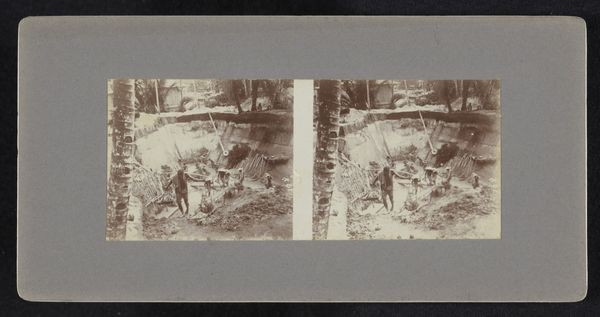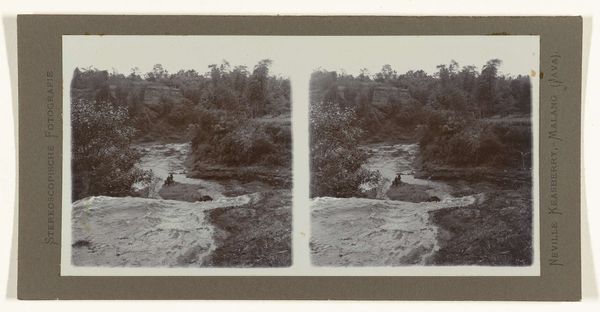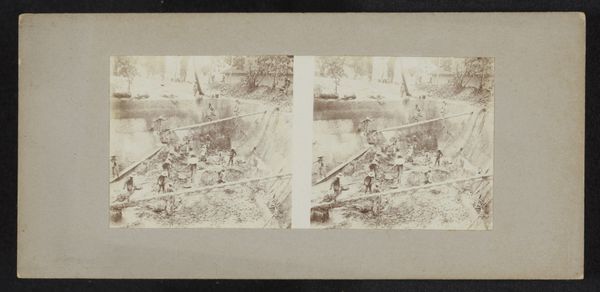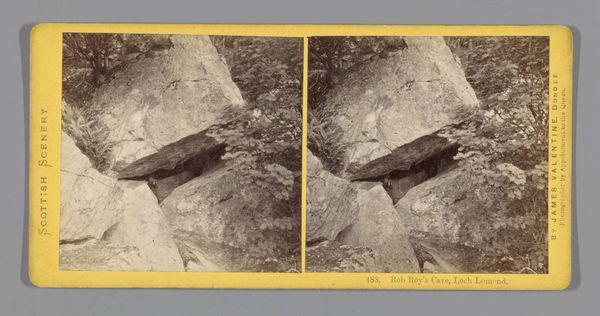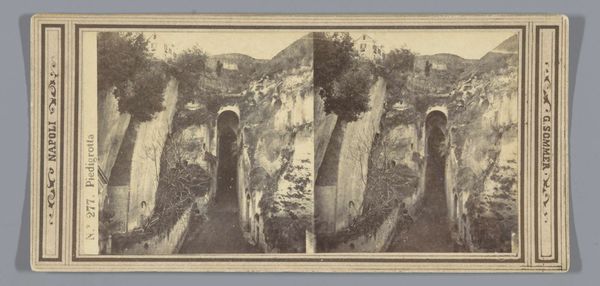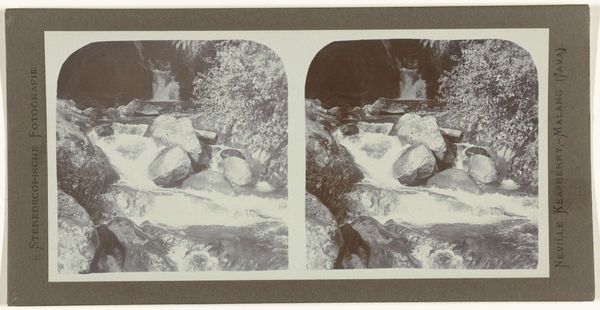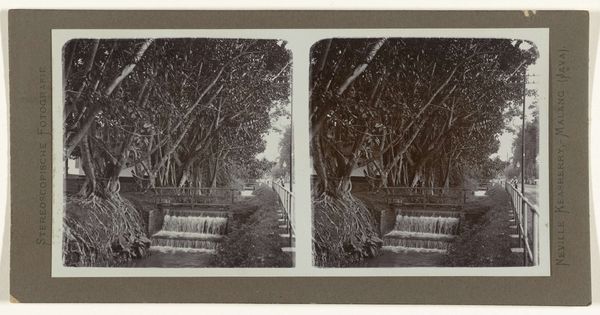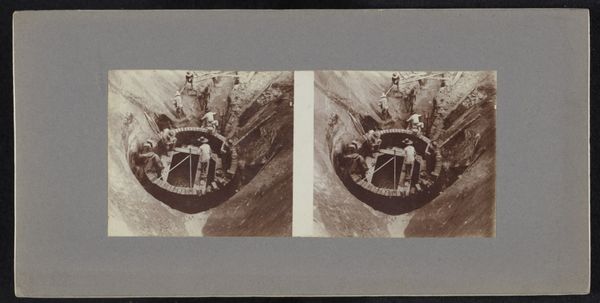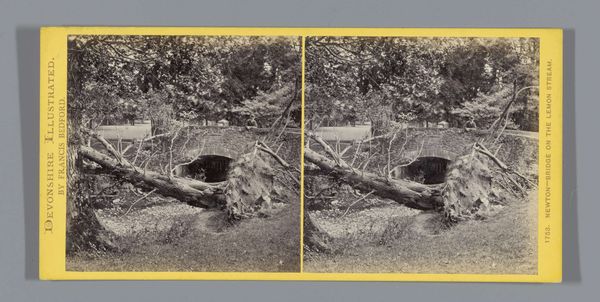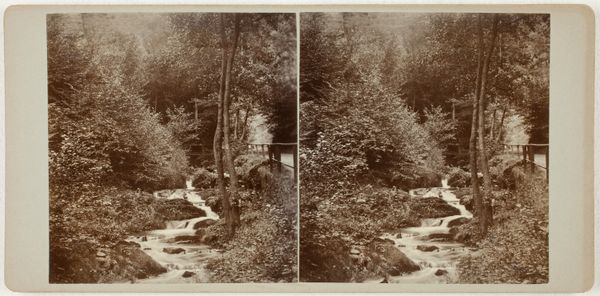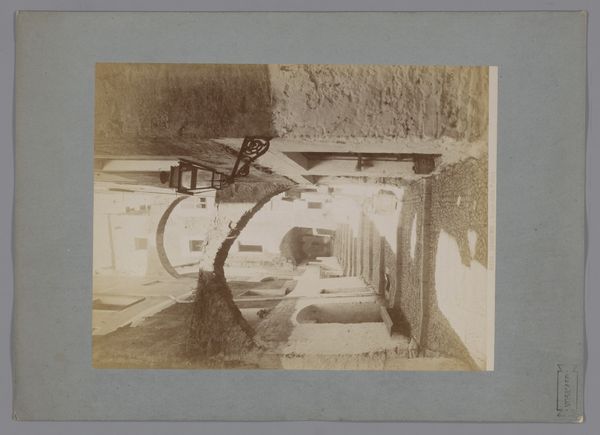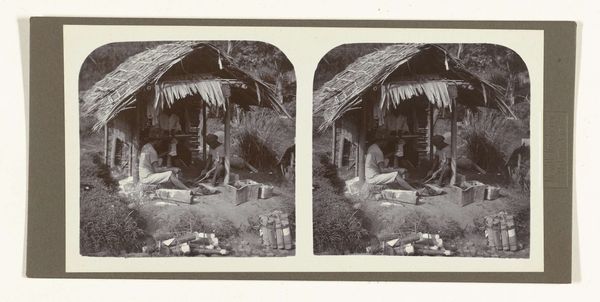
photography, gelatin-silver-print
#
aged paper
#
toned paper
#
homemade paper
#
reduced colour palette
#
muted colour palette
#
light coloured
#
sketch book
#
landscape
#
white palette
#
photography
#
personal sketchbook
#
orientalism
#
gelatin-silver-print
#
muted colour
Dimensions: height 55 mm, width 57 mm, height 88 mm, width 178 mm
Copyright: Rijks Museum: Open Domain
Curator: Welcome. Today, we are exploring “Tinmijn te Soengeiliat,” a gelatin-silver print dating from about 1900 to 1922, held here at the Rijksmuseum and attributed to Robert Julius Boers. Editor: It has this really dreamlike quality… almost sepia-toned, making the whole scene seem to belong to some distant, fading memory. The composition is striking, with a strong central focus drawing the eye into what looks like a mine or excavation site. Curator: Yes, what strikes me is the layering of contexts within this photographic document. Consider the socio-political implications of its creation. The work emerges during the period of Dutch colonial expansion and resource extraction. We see here an industrial practice of landscape modification performed within a network of power dynamics between colonizer and colonized labor forces. Editor: And consider the material conditions: gelatin silver process printing at the time would require specific technical skill and resources, embedding additional socio-economic data into the creation and survival of this document. You get the sense of physical labor through the details: the earthworks and simple implements depicted, really focusing the means and locations of extracting and using specific goods at a given time. It serves as a compelling insight into historical labor practices. Curator: Indeed. Its aesthetic simplicity is deceptive. This photograph exists not merely as a landscape image. It’s intertwined with complex relationships around resource exploitation, shaping economies, impacting lives and reshaping landscapes within asymmetrical global economies that stretch even into the present. This is a visual record not merely of work being conducted, but of colonial infrastructures. Editor: The photograph also encourages reflection on value. This work asks: what are we extracting from our landscape? At what human costs? By making those processes and impacts more concrete and accessible for analysis, maybe the work, from the very start, could allow for new critical perspectives? Curator: Precisely. By centering colonial narratives, the photo, maybe inadvertently, questions practices of inequality through material display. It brings past dialogues of race, economics, labour and inequitable divisions into our contemporary art space, re-inscribing older injustices for newer social dialogues. Editor: This makes you wonder about the labor processes inherent not only in what it captures, but its very creation, providing multiple frames to question material origins and social use! Curator: Absolutely, providing layered contexts from which contemporary social dialogues can take place!
Comments
No comments
Be the first to comment and join the conversation on the ultimate creative platform.
